|
What is enchanting about Lisbon? The answer is simple: the river, the streets and above all, the sea. And even more important to me are those who have celebrated them in their art. My trip was a homage to my favorite poet, thinker and philospher, Fernando Pessoa. I also wished to see it through the eyes of one who celebrated Pessoa and his city in so many wonderful novels, Jose Saramago. In previous Blogs I have spoken of Pessoa and his incredible life and poetry and have mentioned Saramago in connection with him. I will surely cover him in more depth in future blogs. But here I want to speak of my sensory impressions of both Lisbon and the sea. You cannot visit Lisbon without being constantly reminded of the presence and importance of the sea. From Luis de Camões’ The Luciads, to Fernando Pessoa’s Messagem, both dramatising Portugal’s explorations, the sea is alway there, magical and essential. I spent the entire month of September 2022 in Lisbon. I had promised myself years ago, that I would return to that beautiful city, but it took me many many years to finally make it happen. As I said, I had several reasons for the trip, but one that was really pulling me was the memory of evenings in small rustic bars filled with music lovers, eating fragrant cheeses and fresh country bread accompanied by the country’s celebrated wines while thrilling to the rich and plaintive sounds of the traditional fado music. But little did I know how quickly the entire city would earn my affection. My son visited me for part of my trip and on our second night after a marvelous afternoon Tagus River sail, quite by luck we and friends landed at a wonderful little restaurant in the old Alfama district for a typical Portuguese meal and some Fado music at the appropriately named Canto do Poeta (diogo_castro_ferreira on instagram). The owner of the place is a talented guitarist who invites friends to join him every night beginning at 9:00 for a dinner show. The place is small and bohemian. Reservations are required and once the music starts, no one is allowed to enter. It is an intimate and personal atmosphere of friends and fans. The food and service are delightful and drinks are included in the one price fits all program. They play rounds of three pieces with lights low and no talking as Fado singers improvise and the musicians must be alert to their variations. Lights go on and conversation and food service resumes until the next round. Many singers come and go throughout the evening and musicians frequently arrive for a sort of after party for which we were happy to be present. It couldn’t have been more perfect! Diogo, the owner, won us over with his charming personality as did the entire staff and other musicians. I returned several times with my son and with my niece and will do so again when I return to Lisbon this fall. Oh, but the music is just the beginning. The first day I walked out the door of my delightful airbnb apartment and began walking I was astounded by the beauty of the buildings and the streets and sidewalks decorated with beautiful tile and stonework. The trees along the avenues and the many parks and outlooks were enchanting. The atmosphere was warm and welcoming and I immediately felt I belonged there. Since my son is a surfer, we traveled the short train rides to several lovely beaches crowded with families and surfers both local and international. Days on the beach were marvelous. Since we were there at the time the waves begin to be very attractive, my son was happy to enjoy some great swells. Evenings were spent walking through the city, stopping here and there for a cocktail or a bite to eat and to enjoy the views of the city with its many hills, the remains of the moorish castle and the gaiety of the people. I enjoyed visits to some wonderful museums, Casa Fernando Pessoa, Foundation Jose Saramago, the Museum of Fado Music, the Belen Cultural Center near the San Jeronimo Monestary where Fernando Pessoa’s tomb lies as well as that of the beloved 16th century poet Luis Cameõs. I promised Fernando and will keep my promise to return soon. “Here where the sea ends and the earth awaits” (Quote from the Lusiads. Also a final line from Jose Saramago's marvelous novel about Fernando Pessoa and one of his hetronymns The Year of the Death of Ricardo Reis) .
0 Comments
Stepping Out for Music in Berkeley, California
By Christie Seeley vallartasounds.com Following several years of pandemic lockdown followed by some recuperation from unfortunate, temporarily disabling accidents, I find myself back on my home turf, the San Francisco Bay Area. Prior to COVID 19, I spent several years in Puerto Vallarta, Mexico discovering the joys of not only the surf but the marvelous local music scene in that magical community. I enjoyed supporting my favorite bands by writing for an in English newspaper where I did my best to inform the expat and tourist communities about these talented musicians. My efforts culminated in a joint venture with a favorite musician producing a world music festival that was such fun and thrilled our many fans. Back in the Bay Area for a spell, I am discovering some incredible venues that I plan to frequent. For those of you who have been enjoying their performances for some time I apologize for my redundancy. But if you are just starting to step out again after a long hiatus, let me mention a couple that have me very excited. I have long been aware of Freight and Salvage and their popularity but was thrilled to find they are attracting shows I have longed to see. A big fan of Django Reinhardt and the musicians he inspired The Django Festival Allstars so attracted me that I flew up from Mexico just to see them perform in November of 2019 as part of SF Jazz’ program. They were incredible! I am thrilled to learn that they will be playing at Freight and Salvage on Friday night, July 29! These guys are all so talented. Samson Schmitt, Pierre Blanchard, Ludovic Beier, DouDou Cuillerier, and Antonio Licusati, are all super respected in French jazz manouche circles and I can’t wait to see them perform again. My other passion in music in Puerto Vallarta has been flamenco guitar. What a treat to be presented with the opportunity to experience a wonderful flamenco performance at an informal venue called The Back Room on Bonita Street in Berkeley on August 11. “Night Flowers” featuring the already familiar Seattle based flamenco dancer Savannah Fuentes and her partner for these shows singer guitarist Diego Amador Jr. from Spain promises to blow minds. Diego performs flamenco that recalls Cameron de la Isla and the likes. Incidentally, his father is a renowned flamenco pianist who has shattered boundaries with his performances right here in Berkeley. I hope you will be inspired and join me for these and other wonderful local performances. It is summer! What better time to enjoy the music! Freight and Salvage 2020 Addison Street Berkeley, California The Back Room 1984 Bonita Avenue Berkeley, California The heteronyms by Antonio Costa Pinheiro from collection Calouste Gulbenkian Museum Lisbon skyline above the Tagus River A Chance To Breathe the Air of Poet/Philosopher Fernando Pessoa’s Cherished Lisbon
By Christie Seeley Vallartasounds.com After a disheartening 2021 during which I was compelled to cancel two trips to Europe, it looks like I may be successful this fall. I plan to spend a marvelous month living closely with the shadows of my favorite poet and thinker, Fernando Pessoa, and his many heteronyms in Lisbon, Portugal. At the end of August, Casa Fernando Pessoa, museum and last home to the great poet, will open a new area dedicated to Pessoa’s day to day life in Lisbon. With the help of Delta Airlines and Air France, I was able to utilize credits from the previous trips I canceled due to the arrivals of Covid-19’s various new faces. Together we created a comfortable itinerary for my flights. Airbnb furnished the rest. If all goes as planned, I will spend my month in this enchanting city reflecting on it’s beauty, it’s history and especially on its culture. My rented apartment is in the Principe Real district, a lovely 19th century residential neighborhood with a park right outside its front door. There I plan to spend leisure hours reading and planning each day of my adventure. As a preamble to my travels, I explored in depth Pessoa’s life and works. I read extensively about different periods of the history of Lisbon, not alway uplifting but essential to understanding the people and the culture. To help dispel some of the gloom, I enjoyed Jose Saramago’s innovative “History of the Siege of Lisbon” in which his protagonist, a respected editor, takes the liberty of altering one story-changing word to everyone’s eventual satisfaction. I also enjoyed films including the lovely rendition of “Night Train to Lisbon” based on the novel by Pascal Mercier which illustrates the cruelty of and the resistance to the infamous Salazar regime in a beautifully done work with Jeremy Irons as storyteller. I first learned of the poet Fernando Pessoa on a visit to the Calouste Gulbenkian Museum while visiting Lisbon in the 1980’s. Set in luscious gardens on the edge of town, the modern museum invited me into its sleek, light-filled interior. To my surprise, I found near the entrance a humorous and intriguing exhibit by contemporary Portuguese artist Antonio Costa Pinheiro honoring the life and works of the poet. Completely unprepared and understanding no Portuguese, my curiosity led me to investigate both the artist and the poet further. Fernando Pessoa was a strikingly complex man. Born in Lisbon in 1888, he received his early education in Durham, South Africa, where his stepfather was Portuguese Consul. He returned to Lisbon upon the death of his stepfather and never again left the city during his short life which ended in 1935. Much of his first writing was in English taking inspiration from William Shakespeare. Later, Pessoa developed many personalities or personae each possessing his particular identity and history. He called them heteronyms. Through them, he wrote significant works of poetry as well as essays, plays, and even dialogues amongst them. Alvaro de Campo, an engineer from Glasgow, was the most outspoken and unguarded of the heteronyms, often expressing shocking ideas in startling language. Ricardo Reís, an eloquent doctor, located in Brazil, was a classicist, and Alberto Caeiro, a zen-like naturalist, was admired by the others for his purity of thought. Bernardo Soares, a less proficient heteronym, was responsible for Pessoa's final tome, published posthumously, the Book of Disquiet. Fernando Pessoa "himself," still my favorite, was closer in style to Alvaro de Campo but certainly had his unique point of view. Walt Whitman was a writer he admired along with some of the French surrealists including Baudelaire. During his lifetime, Pessoa published only one book of poetry, Message (Mensagem), but kept all he wrote on whatever he could find at the moment in a trunk which was only recently opened and from which emerged the celebrated tome called the Book of Disquiet. When I first began looking into Pessoa, I could find nothing written in English about him. On a trip to Paris to attend an event celebrating Pessoa in 1985, I discovered an excellent bilingual book of his poetry in Portuguese and French called Fernando Pessoa, Poete Pluriel. I became a dedicated fan and read everything I could get my hands on to expand my knowledge. Much later thanks in part to the excellent scholar and translator Richard Zenith, his works became available in English, and by now, the world recognizes him as the force that brought Portuguese literature into the modern era. Lisbon now boasts a museum and statues celebrating his life and work. So, as long as Covid-19 cooperates, I will finally revisit Lisbon, this time with a greater understanding and affection for my literary hero Fernando Pessoa. Traveling With Stendhal
By Christie Seeley vallartasounds.com Marie Henri Beyle is known to the literary world as Stendhal. My infatuation with Stendhal, a native of Grenoble France, began with a course in Romantic French Literature at UC Berkeley. The professor credited him with the quote: "If you have a heart and have a shirt, sell your shirt and go to Italy." those words struck a chord in me. One Spring, when re-reading Stendhal's The Charterhouse of Parma, I decided to make the investigation into his life a good excuse to visit two areas I had long wished to experience, the Dauphine of the Alps of France and the rich Emilia Romagna region of Italy. An ambitious itinerary would take my companion and me to Paris, where Stendhal spent much of his adult life and on to Grenoble, where he was born and raised. From Grenoble, we would take a route through the Swiss Alps into Italy. Both young Stendhal and his "alter ego" Fabrizio, the hero of The Charterhouse of Parma, traveled this route at around age 17. Stendhal was on his way to join his cousin with Napoleon's army, and Fabrizio, a romantic runaway, was returning from Napoleon's fateful battle of Waterloo. Once in Italy we would explore sites important to both young men, including Lago Maggiore, Novara and Alessandria, the location of the famous battle of Marengo. We would continue on to Parma, where Stendhal situated his novel The Charterhouse of Parma and, finalize our trip in his favorite city, Milan. How you gonna keep him down on the farm after he’s seen Paris? Stendhal traveled to Paris in 1799 at age 17, just as Napoleon proclaimed himself first consul. His purpose was to study mathematics at the Ecole Polytechnique. Stendhal's happy childhood in Grenoble had ended upon his mother's death when he was only seven. From that time on, his consuming desire was to rid himself of all that reminded him of this tremendous loss. His diligence in studying mathematics had the goal of his eventual escape from what had become to him a hostile environment. His first lodgings in Paris were in a hotel on the corner of Rue de Bourgogne and Rue Saint Dominique, chosen for its proximity to the Ecole Polytechnique. Deciding against taking the entrance exams, Henri never attended the famous Ecole. Instead, he roamed about exploring his new freedom until he became seriously ill and had to be rescued from his indirection by a wealthy, retired uncle from his mother's side of the family, Noel Daru. Young Henri Beyle moved to the elegant Daru family home on Rue de Lille and Rue de Bellechasse (near the site of the Gare d'Orsay built later in the 19th century). Pierre Daru, the cousin, immediately procured him a position with the War Department, which would determine his career throughout Napoleon's regime. The impressive Domed Church of the old military hospital established by Louis XVI--Les Invalides, stands only a few blocks away from the Daru’s residence at the west end of the 7th arrondissement. There lie the remains of Napoleon I, transported from the place of his death, St. Helena, to this site in 1861. The luxury of the gilded dome of the church offered us a magnificent setting to contemplate the importance of this controversial figure to Stendhal's generation of Europeans. To Stendhal (his pen name taken from a city in Germany where he was stationed in the military), the youngster, he was a massive inspiration as rumors of the young general's early military achievements raced through Grenoble, spurring the boy's imagination with thoughts of grand deeds in what he considered an otherwise stagnant and dull society. Stendhal, the soldier, accompanied Napoleon on numerous military campaigns such as he later brought to life in his novel, The Charterhouse of Parma. He saw Napoleon in person in full military regalia on several occasions and even claimed to have had a conversation with him that left a lasting impression. He worked throughout his life on two unfinished biographies of Napoleon, Life of Napoleon in 1817, and later in 1828, the Memoirs on Napoleon. When Napoleon fell in 1814, Stendhal found himself without a job and somewhat unemployable. During the first period of his Parisian life (1810-1814), Stendhal spent a good share of his time pursuing his latest passion in the left bank cafes of this and the neighboring Montparnasse area, one of his favorites being Cafe de la Rotonde. Although disillusioned by Paris as an unworldly and relatively impoverished youngster, this more experienced and more affluent Stendhal had developed a love for its cultural stimulation. He had just received an important government position, auditor of the crown's museums, including the Louvre, Fontainebleau and Versailles. His quick wit and clever conversation made him a welcome participant at the fashionable salons, which had survived the upheaval of the Terror. At these soirees, he met the beautiful Madame de Recamier and many other important political and literary figures. Stendhal's first love was the theater. As an adolescent, he lost his heart for the first time to the starlet Virginie Kubley. Two of his most lasting relationships with women were with actresses Melanie Guilbert (1804-5) and Angelina Beyerter (1810-1814). For many years he studied the works of Racine and Shakespeare, working toward a future as a dramatist. The result was the now-famous manifesto published in 1823 on the subject. He also published a Life of Rossini in 1823. The opera and theater often occupied his spare time during his stays in Paris. Stendhal enjoyed such evenings at the Comedie Francaise on Rue Richelieu where crowds gathered for theater, socializing and just plain pleasure which was readilly available. Heading out to where it all began—Grenoble To familiarize ourselves more with the Napoleonic feats that so affected the object of our tour, we made our first stop outside Paris, the Empire Galleries at Versailles. There we found documents, drawings, and engravings, from the Napoleonic period. Besides the impressive "Coronation" by David in the Coronation Room, we wondered at the Battle Gallery's collection of magnificent canvases depicting great French battle scenes by Vernet, Delacroix and Gros. The second-floor galleries contain paintings of both of Napoleon's Italian campaigns, which figure in Stendhal's novel, the Russian campaign where Stendhal was present at the front to witness the burning of Moscow, and Waterloo so realistically portrayed by Stendhal in The Charterhouse of Parma. Stendhal described the crossing of the Alps with Napoleon and his first encounter with enemy fire as a "loss of virginity of the other sort". We could well imagine the ordeal upon seeing these heroic pictorial renditions. Prepared to cover some territory in our comfortable air-conditioned rental car, we drove south to Orleans then west through the lush Loire Valley following the river dotted with chateaux and camping. We meandered through the rich wine country of Burgundy on country roads making a stop at the inspiring medieval church of the Madeleine set high on the hill at Vezelay, commencement point for both pilgrims and crusaders. Heading southeast, we saluted the famous chickens of Bresse-en-Bourg as they grazed (yes, grazed) in the fields and taking the last plunge southward into the foothills of the Alps. We made ourselves at home at the old Abbey Hotel at the lovely resort town of Annecy, buzzing with the festivity of swim-suited vacationers and motor boats on the lake. From there, we would visit Stendhal's birthplace, Grenoble, just one hour away. Grenoble, located at the base of the French Alps at the confluence of the Drac and the Isere rivers, is today an attractive and exciting center of activity and international business. The historic center of medieval and renaissance buildings houses shops and cafes on its pedestrian-only streets. At the Place des Grenelles, always a very active square and gathering place for Grenoble residents, stands the home of Stendhal's maternal grandfather, Dr. Gagnon. Stendhal spent much of his time there following the death of his mother. From the ample windows overlooking the place and its lovely fountain, he watched history develop and formed his interpretation of the world. From his mother's families' Provencal heritage, he derived an open intellect and a lust for adventure--his "espagnolism", to offset the cold, conservative, greedy influence of his father. The Beyle family home, now housing the Resistance museum, is on the narrow and relatively dark adjoining Rue Jean Jacques Rousseau, which used to be called Rue des Vieuxes Jesuits. Significantly, it was in this home that Stendhal was educated by strict, closed-minded Jesuit tutors until finally allowed to attend the public Ecole Centrale, where he read Jean Jacques Rousseau, who was a significant influence on his young mind. According to Stendhal, while his mother was alive, the house seemed warm and bright; her death, however, left the house dark and foreboding. We visited the Musee Stendhal, housed in what in Stendhal's time had been the Town Hall. This historic building looks out on the Jardins de Ville, lined with chestnut trees. The park was important in his childhood memories. He walked triumphantly across these gardens after being presented with the first prize in the mathematics competition that would be his ticket out of Grenoble through a recommendation to the Ecole Polytechnique. In the museum, we mused over first editions of Stendhal's works, letters to intimate friends and his sister Pauline with whom he maintained a continual correspondence sharing his insights and advice, along with paintings and drawings of Stendhal, his family members and close friends. In the Red and the Black opening, Stendhal gives us a clear picture of his feelings for the provincial French town. To the visitor, he tells us, the neat village surrounded by the grandeur of the Alps and the rushing river seems to embody all that is peaceful, clean, healthy and productive. However, when one gets to know the pettiness of the self-important, money-hungry inhabitants, all is changed. These words reflected his opinion of the people of the Dauphine in general and his father specifically, which made Stendhal so dislike Grenoble. Henri Beyle’s Love Affair with Italy Stendhal's first acquaintance with Italy came through his military career. He was sent to Milan in 1800 to join the division of his cousin, Marital Daru. There he discovered people more concerned with the callings of their passions than that of their pocketbooks. In the prologue to The Charterhouse of Parma, Stendhal relates that to the Italians, "...poverty is not...considered a subject for ridicule." He had had sufficient experience to confirm this statement written in 1838. He lived in Italy unemployed after Napoleon's fall in 1814 -1821, and he was French Consul at CittaVecchia in 1838, both periods of his life when he had very limited resources. We passed through Geneva as Stendhal had done, exploring the homeland of his hero Jean Jacques Rousseau. We drove at a leisurely pace along the north shore of Lake Geneva (Lemans to the Swiss), rimmed with vineyards, beautiful landscapes and small, very civilized towns. As we left the lake and headed east, our route took us to the junction for the Saint Bernard tunnel, the pass over which Napoleon led his troops to get to Italy and the Battle of Marengo in 1800. Stendhal took the exact route, wet and cold on horseback, to join those troops in Novara and go on to Milan. Continuing east, we followed the Rhone River, the Alps rising all around us, and crossed the mountains at the Simplon Pass--constructed later by Napoleon to return his troops to Geneva after the Battle of Marengo. Our turbodiesel Lancia ascended 1500 meters in such a short time that it felt like an elevator ride and offered spectacular views of the Rhone Valley below, abundant with vineyards and timbered Swiss Chalets. The summit was active as hikers and sightseers explored the vast alpine meadow. Huts on the mountainside reminiscent of Heidi's were sprinkled here and there. Following crystal, icy-looking rivers, we came out of the mountains on the Italian side through fields of sunflowers. We were soon rewarded by an immensity of blue, which was actually but a slight curve of Lago Maggiore as it opened into a grand bay between the towns of Stresa and Pallanza, showing off the jewel-like Borromean Islands and Island of the Fishermen, Isola dei Pescatori. As we approached Stresa, we were stunned by the impact of the lake, even then only viewing about one-third of its entire area that reaches well into Switzerland at the Northern end. Upon visiting Lago Maggiore in 1800, Stendhal wrote to his sister Pauline that the beauty of Maggiore and the Borromean Islands was unsurpassed even by Lake Geneva. In The Charterhouse of Parma, Fabrizio's mother often maintained a villa on Lago Maggiore. The Duchessa Sanseverina also took an estate on the Swiss end of the lake to hide Fabrizio after he escaped from imprisonment in the Citadel of Parma. We stayed at an old villa which once welcomed 19th-century intellectuals as guests, perhaps even Stendhal near the town of Stresa. The best way to see Lago Maggiore is to catch one of the numerous ferries that transport sightseers to Isola Madre, Isola Bella and Isola dei Pescatori. In the cool morning air on the deck of one of these ferries, we guessed at which of the villas that lined the shore might have been occupied by the beautiful Duchessa Sanseverina in Stendhal's novel. From which dock did she take a boat each day to meet Fabrizio for their long silent rides? Our ferry took us through early morning drizzle to both Isola Madre and Isola Bella. We stopped to appreciate ornate gardens and villas built by the wealthy Milanese Borromeo family in the 17th and 18th centuries, catching the next ferry out again. The smallest of the island group, Isola dei Pescatori, is not one of the Borromean Islands but a tiny independent fishing community. We chose a small terrace restaurant at the far end of the island for lunch. Soon we were joined by some of the island residents--about six in total--ranging from calico to black and white spots to jet-black recognizing that, indeed, a fishermen's island should have more than its share of feline inhabitants. Napoleon and the Battles Early one morning with the mist rising from the lake, we headed south to Novara, where Fabrizio spent his first exile. He was denounced to the Austrian authorities by his brother. Novara is also the town where Stendhal was to hear his first Italian opera, an experience that overwhelmed him with emotion. The country around Novara is rich agricultural land, which leads into the Piedmont wine country extending from Asti to Alba, Monferrato and Acqui Terme to Alessandria. It is a lush, affluent country that boasts of its white truffle the Italians treasure. Just south of Alessandria on the old Genoa Road, we finally located our objective--the village of Marengo and the battlefield where Napoleon defeated the Austrians on his second Italian campaign. The credit for this famous victory goes to General Desaix. Finding Napoleon's troops overcome by those of Austria's Field Marshall Melas at 3:00 in the afternoon on the 14th of June, 1800, he announced, "The battle has been lost, there is still time to win another," and offered to lead the attack in which he won the day but lost his life. Stendhal himself joined the troops at Marengo before heading back to Paris. He boasted of having a face-to-face encounter with Napoleon though he was not involved in the battle. We left these remains of real and fictional events and continued to Genoa along the magnificent Ligurian Coast road offering a unique system of tunnels. We made a stop at La Spezia to appreciate the view of the rugged coastline tucking in and out around five remote seaside towns known together as Cinque Terre and then headed inland to our destination of Parma. Parma and the Drama of the Charterhouse Parma, the location of most of Stendhal's last important novel, is a lively city of yellow-painted facades, the red brick of the Po Valley and pink Verona marble, set in the middle of the rich gold-colored fields of the Emilia Romagna. In Parma, we discovered a city of distinctive medieval and renaissance buildings, including the Palazzo Della Pilotta, built by Ranuncio Farnese, and the Po Valley-Romanesque Cathedral (1092) with its pink Verona marble Baptistry. Of primary interest to us were the remnants of the Citadel, begun by Alessandro Farnese as an exercise in military architecture and completed by his son Ranuncio as a prison. The Citadel was the site of Fabrizio's detention, dramatic escape and eventual surrender due to a treacherous but pure love affair with the daughter of the Governor of the Citadel, Clelia. The site is surrounded by a fashionable residential neighborhood on the front and the countryside at the rear. Its walls and main gate, the cornice of which displays the Farnese coat of arms, are nicely intact. Modern Parmigiani uses the park-like grounds for jogging, cycling and picnicking. The impressively oversized Palazzo Pilotta dominates the old city. Its original purpose was to integrate the various ducal residences and government buildings. The Palazzo still holds some pleasant surprises including the Farnese Theater. Again, Stendhal's love of the theater brought some of the critical action of the novel to theatrical performances performed by the court exclusively for the court's entertainment. There significant political negotiations took place amidst the glamiour of the performances. The double grand staircase and dome of the Palazzo are reflective of the powerful position of the Farnese dukes in Stendhal's story. Departing Parma by the local road toward Mantova, we passed the Charterhouse at Paradigna used as the model for the Charterhouse of Parma of Stendhal's novel. A short distance down the road, we visited Colorno, where the palace described by Stendhal as the Versailles of Parma still stands. Crossing the bridge over the Po a few kilometers away, we could see the glimmering roofs and the dome of the church of the town of Castalmaggiore. We envisioned the San Severino family servant Ludovico hiding Fabrizio in the rushes below as they made their way down the river to safety after his escape from the Citadel. Milan! We wound up our trip with Stendhal's favorite city, Milan. He wrote such things to his sister Pauline throughout his lifetime as "...my heart feels only Milan and the luxuriant countryside around it." Paris had liberated him from his provincial family, but Milan freed him from his inhibitions and allowed him to discover his nature. After falling in love a few times and being expelled by Austrian authorities, he briefly returned to Paris in 1821. Two years later, Stendhal set out again for Italy to travel and write but could never again enter Milan. Still, "It is only in Italy that one cannot help loving." he wrote to Pauline. Finally, he was appointed French Consul to CittaVecchia in 1831, a post not so much to his liking but allowed him time for his writing and traveling whenever he had an excuse. Without ever returning to his beloved city, he succumbed to a lifelong illness in 1842 while seeking medical advice in Paris and was buried there, not in Milan as he had wished. By the end of his life, Stendhal considered himself more Italian than French. One of the most profound effects Italy had on Stendhal was to open his heart to the world of music. On his first trip to Italy, he heard for the first time the themes of Cimarosa. He wrote to his sister of the heavenly sounds and the beauty of the Italian opera. It is not surprising that in The Charterhouse of Parma, Stendhal introduced us to the workings of Milanese society in the recently constructed Teatro Della Scala. According to Stendhal's description both in his novel and his letters, the boxes of La Scala were the center of social activity, where influential individuals "held court," the etiquette of which was strictly defined, though unwritten. Stendhal, as well as his characters, spent many happy hours at La Scala opera house. We approached La Scala walking from the Duomo with its splendid white spires reaching heaven through the elegant glass-covered Galleria. We looked across the piazza, past the statue of Leonardo da Vinci, at the yellow arches of La Scala where the simple, stately facade masks an elegant interior, which is the setting for some of the most impressive performances of opera, music and ballet in the world. We knew that Milan would not have been the same to the Duchessa Sanseverina and the Conte Mosca or Stendhal without La Scala. It was the last night of our trip. Though the city was close to deserted on this mid-August Saturday evening, we were lucky to find open an elegant, neighborhood trattoria near the Porta Genova, the Aurora. In the freshness of a large trellised courtyard, in the company of well-dressed Milanese and perfectly starched waiters, we enjoyed countless courses of antipasti, followed by risotto, veal cutlets, and velvety gelato accompanied by a rich regional red wine. We reminisced over the exquisite meals we had enjoyed, the sights we had seen, and the pure pleasure that travel avails to the adventurous spirit. Stendhal was one who truly understood the joys of travel for the sake of travel. He published a tourist guide to Italy, Rome, Naples and Florence, in 1817, followed by Promenades in Rome in 1829, which enjoyed great success. Throughout his life, he found himself, more often than not, on the road. We take our cues from him and plan our next journey before arriving home from the present—Bon Voyage to us all. The Celebration of Saint Sarah
By Christie Seeley vallartasounds.com Many years ago, when my children were relatively young, my husband and I concocted the brilliant idea of spending three months in France with our entire family (the youngest turned one on the trip). We did not intend it to be a grand tour but more of an international living experience. We purchased a Volkswagen Vanagon that he picked up in Brussels, and after spending an eye-opening week in Paris, we headed to Provence, where we planned to spend much of our time. We spotted an offer in the International Herald Tribune. We contacted a fascinating man who agreed to rent us his rustic, quite romantic stone shepherds hut outside the historical ruins of Les Baux-de-Provence amid rocky hills of bauxite scattered with herbs and olive trees. The cottage had no electricity, but he equipped it with hundreds of candles in ornate candelabras surrounding a giant fireplace. This quaint location invited us to explore surrounding towns like Maussane-les-Alpilles and Saint-Rémy-de-Provence and picturesque Arles for market days that offered incredible delights. One day in May, the 24th, to be exact, we decided to drive south to the Camargue area, hopefully, to see the wild horses for which it is famous. As we drew close to the town of Saintes-Maries-de-la-Mer about which we knew little, we passed dozens of caravans heading in both directions. We were puzzled until we arrived in the village to find this was the day of festivities celebrating Saint Sarah, patron saint of the Romani people. The streets were filled with people dancing, playing music and frolicking in a celebratory fashion. Upon entering the low ceilinged chapel below the church's nave, we were overwhelmed by the heat of thousands of candles lit in reverence for Saint Sarah herself's black figure. The pilgrimage brings thousands of devotees to the town every year, where they re-enact Sarah's legendary arrival by sea to the city. By some accounts, she is the daughter of Jesus Christ and Mary of Magdalene. However, according to Romani scholar Ronald Lee who compares the ceremonies in the worship of Kali in northern India with those performed in France at the shrine of Sainte Sara (called Sara e Kali in Romani). “...we become aware” he says “that the worship of Kali/Durga/Sara has been transferred to a Christian figure... in France, to a non-existent "sainte" called Sara, who is actually part of the Kali/Durga/Sara worship among certain groups in India." As my investigation into Lee's work also informed me, the Romani people came from northern India into France, Spain and other European destinations starting in the 14th century if not earlier. Our little party was thrilled by this demonstration, and, quite frankly, though we drove through the Camargue, we never spotted the famous horses. No one was disappointed after all we had experienced that day. An open mind and adventurous spirit lead to all kinds of beautiful encounters. I will never forget that colorful introduction to Romani culture and music, which continue to fascinate me today through the flamenco and jazz manouche I hear performed here in Puerto Vallarta and in my European travels. The Enchantment of Mexican Cinema
By Christie Seeley Vallartasounds.com Recently a friend asked me to recommend films that were beautiful and yet not sad. That was a complex request. Beauty for me involves poignancy. The movies Mr. Pig, and Roma, are among those I chose. These are not sad movies. They are movies that portray life, period, like the song Mr. Bojangles. The first time I heard the song Mr. Bojangles performed was at the Circle Star Theater in San Bruno, California, by none other than Sammy Davis Jr. Needless to say, I was impressed by his entire performance. Nevertheless, I couldn't tell you any other piece he performed, but Mr. Bojangles will live on forever in my memory. When I heard it interpreted by Nina Simone as part of the great soundtrack of one of the movies, Mr. Pig starring Danny Glover and Maya Rudolph, all of the feeling came back. If you have a heart and have not yet seen this film, do so. The story reveals a lifetime of feeling told in one short road trip. Danny Glover will involve you in his story, and while you may at times see his character's shortcomings, he will pull you in with his touching humanity. The film is written and directed by Mexico City's talented Diego Luna. The filming is stunning as Glover travels for the last time through Mexico to find a home for the last of his prize hogs at pristine Playa Majahuitas Beach just south of Puerto Vallarta. Another beautiful and provocative song in this film is "My Autumn's Done Come" by Lee Hazlewood. It will move even the hardest heart. By the way, locals of Majahuitas can tell you tales of transporting the impressive hog who played in this production in their water taxis to filming sessions! My attraction to Alfonso Cuarón's film Roma is a bit different and perhaps very personal. Again it hits a particular chord for me. The film takes place in Mexico City at around the time my daughter was born in Mexico. Her father was born and raised in Mexico City, and her grandfather still lived in a home very similar to the one in Colonia Roma of Cuarón's film. The portrayal of the middle class, Mexico City life, was so on the spot that I could not help but be transported into the family's drama. The indigenous actors were beautiful in their portrayal of the family "staff" and their relationship to the family. Theirs is a land of its own, between the worlds they left behind and not entirely accepted in the new one. Again, the artistic filming blew me away, especially the rooftop scene revealing the family's different worlds below and the women who shared the home as employees. The closeness and yet the distance between them is extremely telling. Released in 2018, Roma is the recipient of many well-deserved awards. Whether on Netflix or other online sources or in the theater as that again becomes possible, I will continue to turn my imagination over to the transforming world of cinema. I hope you will too! 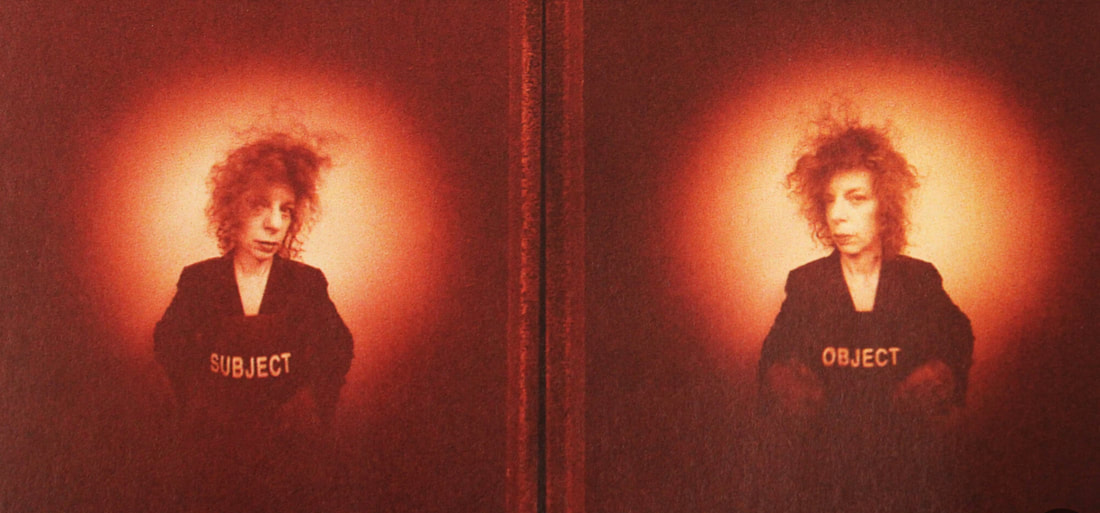 My Past Just Crossed My Future By Christie Seeley vallartasounds.com Recently I read an article, actually an obituary, about a photographer and musician who used the pinhole technique very effectively during her career. I found the story very interesting, and it brought to mind my evening at Fraenkel Gallery in San Francisco some years ago. My last year at my job at a real estate investment firm was deluged with events. I loved creating experiences for people, which was not so much a burden as it was a pleasure. One such event involved an evening for employees and investors at a prominent art gallery in San Francisco. The owners of Fraenkel Gallery were friends of and investors in our companies properties. The gallery was created by the ambitious pair Jeffrey Fraenkel and Frish Brandt in 1979 out of their love for photography. They wanted to bring the medium to the attention of a more serious art-oriented public. They chose an appropriate location in downtown San Francisco near the prestigious SF MOMA art museum. Our group finished off our event with a lovely dinner in nearby Cafe Claude's outdoor alley, an excellent bohemian style French jazz bistro. It was indeed an unforgettable evening. One of the highlights for me was an exhibit of pinhole photography. Not being a real connoisseur of photography but a medium lover, I was unfamiliar with Pinhole photography. I was blown away by what I saw that night. This technique involves a very long exposure of an inanimate object through a tiny pinhole opening in the camera's lens. It requires much patience and produces a fascinating result. Interestingly for me, there is another connection to Fraenkel Gallery that I only recently discovered. When working my way through the corporate community in San Francisco, I had the opportunity to be employed by an amazing man celebrated as one of the most successful value fund managers in the country at the time, Andy Pilara. Although I had no previous experience in the investment business, he trusted me to learn. The job was exciting, and the company a delightful place to work. Recently I learned that my ex boss’ passion is photography. Beginning with a visit to the same Fraenkel Gallery, he started purchasing and collecting magnificent pieces. He eventually began showing his collection in a space located in a warehouse on one of the San Francisco Bay piers. Pier 24 has a reputation as one of the most extraordinary places to see and enjoy photography in the country. Admission is free and by appointment. I guess we never know when pieces of our journey in this world will intersect. Hats off to the champions of the arts and the experiences they provide, which enrich our being! As Barbara Ess, the recently deceased photographer, was quoted in her obituary: “Take a picture of this meat, this husk. You don't have me. I am something that cannot be photographed, cannot be named, defined, translated. There's experience and that's all there is." East Meets West and Makes Wonderful Music
By Christie Seeley Vallartasounds.com It is funny how a particular smell, a piece of music, a random photograph can bring the past to life for you. For me, memories appear suddenly like that and bring back people I knew and things I experienced years ago as if it were yesterday. And then, I remember the woman I was back then and can scarcely recognize her. For example, the mention of a name I hadn't heard for years brought images of sitting on exotic tapestry-covered pillows on the living room floor at the Berkeley home of friends from Oregon in the mid-'60s. My host's family had been owners of a successful grocery chain before a fatal accident left him a wealthy heir with no need to labor or study further. Their home, an arts and crafts studio that I later learned was built by Bernard Maybeck, in the woodsy Berkeley hills, rafters stuffed with expensive weed and the kitchen always plentifully stocked with food was the place of many a gathering. My friend's wife enjoyed tie-dyeing and drove a new Lotus Elite sports car. She dressed in the fashionable attire of the period with that goodwill counter flavor but monied appeal. Plus, she was married to one of the funniest guys I knew. A Ravi Shankar record was playing on a modern sound system when at the doorway as if swept in by the wind appeared an impressively large man. He, wrapped in a long, elaborate purple cape, his untended beard and hair flowing, recounted tales of wrestling with grizzly bears in Alaska. Those were memorable days! My husband and I lived on a shoestring, but we were happy. Our possessions were few: a carved Mexican bench we purchased at the newly introduced Cost Plus Market, a small, used coffee table from a flea market decorated with colorful Venetian glass tiles but never quite finished, a mattress on the floor that functioned as our bed, and a vintage drop leaf kitchen table and chairs gifted us by my parents at our wedding the year before. As far as we were concerned, life was good and we wanted for nothing. We owned an oldish, grey Citroen 2CV that took us where we wanted to go "in style." We imagined ourselves the protagonists of the artsy French films we devoured with our friends at scruffy little theaters in questionable neighborhoods. We then spent hours discussing Truffaut, Resnais and Godard over coffee in little bohemian-style cafes. In those earlier days, I also recall spending a birthday weekend in a little Seaside, Oregon cottage owned by the family of another friend from University. A law school graduate, our buddy spent time working in Mississippi at the beginning of the civil rights movement. He and his wife, an amazing woman from an unconventional but very well-educated San Francisco family he had met while studying at the renowned and transformative Reed College, lived in Portland. My husband and I drove up from Eugene, where we lived, joining them. At that time, everyone was talking about the Beatles. As our little circle of friends was more into Ravi Shankar than pop music, we were somewhat uninterested in their arrival. Still, we decided to listen to their debut on the radio to see what the fuss was about that evening. We surprised ourselves by being impressed. We went to bed early and woke to a strange sight. As we left the house to find coffee, we saw cars floating in the river and debris all over the streets. When we attempted to go down to the beach, the police stopped us. There had been a massive tidal wave! Well, we thought, those Beatles did create a stir! The following day, our friends parked their car to walk to the beach and had all their Ravi Shankar records stolen! Ravi Shankar and George Harrison of the Beatles! Who was to know how these two musicians would influence the music scene and the culture of the next 30-40 years! A Romp with Antiquity
By Christie Seeley Vallartasounds.com Some years ago my daughter and I were invited to a baptism on the Greek Island of Paros. Her friend’s one year old daughter was receiving her Greek Orthodox sacrament having already celebrated in her grandfathers homeland of southern India. The ceremony was to take place in the exquisite Byzantine church of a Hundred Doors filled with weathered beams and impressive icons of silver and gold. The original structure dated back to the year 326. My assumption was that such a traditional event in a remote place like Paros would be a very conservative affair. I was soon proven wrong. I was amazed as I met the colorful family and guests, finding myself surrounded by a very sophisticated group of the glamorous young artist friends of the couple from New York. The colorful members of the father’s once left wing activist family were also a surprise. They were important players in the 1960’s during the revolutionary movement portrayed in Costa Gravas’ wonderful film Z. The god mother, owner of a boutique in Mykonos, wore a very brief white dress with black detail, the essence of Greece and the sea, and the grandmother wore a diaphanous flowing retro design in pale grey. The great grandmother played the music as her young “comrade” sang and danced for us in the open air cafe where the party was held. The guests whether European, Indian, Greek or American astounded us with graceful, poetic moves on the dance floor. The island itself, a three to five hour ferry trip from Athens, was sparsely populated. Known as the poor man’s Mykonos, it was dotted with simple white dwellings adorning the rocky hills leading down to the shore. My room in the more modest of the two hotels in the area was sparkling white, spartanly furnished, with one large window looking over the perfect blue of the Aegean Sea. Two cot like beds, a small painting and a mirror imparted the feeling of an ancient monastery, perfect for reflection. I loved it! As far as hospitality was concerned, no corners were cut. The father met fishermen at the market to purchase the freshest of fish. At one meal there were four different courses of four distinct varieties from the sea all served with great simplicity flaunting their freshness and flavor. Wine flowed freely and the atmosphere at the simple outdoor restaurant near the port was absolutely charming. My experience was the stuff dreams are made of. It was as if I had been transported to another planet filled with enchantment! Maybe I had. Ahmet Gulbay, from Chess Board to Key Board
By Christie Seeley Vallartasounds.com When I met Ahmet Gulbay, his trio played regularly at the Saint-German jazz club, the Bilboquet, in Paris. It was the same club that had been a favorite since Django Reinhardt played there in his bebop days, when young, so-called misfits, dressed in tight black pants and shirt sleeves, revolved around the dance floor of what was at that time called Club Saint-German. I had been stopping in to the club for music for several years, but in winter of 2004, I was able to spend a month in Paris and found his trio playing as regulars every evening. My routine was to enjoy dinner somewhere and then walk through Paris's streets until time for the jazz sets. A frigid January, it snowed just before my arrival. In preparation, I brought with me a long, black wool coat, gloves, and even ear muffs, especially for night. As I entered the club, the elegant staff was amused at my choice of attire to come out to hear jazz. Of course, I shed those heavy outer garments as soon as I was seated on the short red velvet stools of the small intimate club. The atmosphere was cozy, and I was warmed even further by the pianist's radiant inviting smile, Ahmet Gulbay. Night after night, I enjoyed the great jazz played by his trio and frequent drop-in guests. One night as I arrived, I encountered an adolescent near the powder room nursing a bloody nose. As I inquired about his well-being, he revealed that he was visiting with his parents, and as a jazz pianist from the Berkeley High band, Ahmet invited him to play. What generosity of this renowned musician and what a thrill for the boy and his family. On another occasion, I met a couple, the woman French and her husband Turkish, who knew Ahmet, who was also of Turkish heritage. We enjoyed a wonderful evening together. The next night, they invited me to join them at a dinner to celebrate the woman's father's birthday. We sat at a lovely long table right in front of the band. The woman's family was beautiful, and we enjoyed friendly conversation with the artist during and after the performance. My visits with Ahmet and the Bilboquet were such a big part of my stays in Paris that on a subsequent trip, when I appeared at the door of the club to find it closed forever, a fire went out in my heart! I located Ahmet at another club and enjoyed his music, but after that trip, I could never find him again at any time I would be visiting Paris. The internet's charm is that it sometimes just throws things in front of you which you would never expect. So how did I find him? Through chess. When he was very young in Paris, a friend introduced Ahmet to chess, and they used to play in a space where musicians rehearsed. Fascinated by the piano, Ahmet gave it a try and was a natural. Although the piano eventually took over his life, (he is now one of the most outstanding pianists in Paris) he continues to excel at the game of the 64 squares. "I consider chess to be an art," he told Bertrand Guyard for the Fígaro in the article I found. His heroes are Bobby Fischer and Fats Waller, "they both have inspiration and, above all, the spirit of sacrifice." “They are men,” he says, “who have given their lives to their art, living their craft more than themselves...Both were looking for the right note and the right stroke for harmony to reign." Ahmet is a man with a lot of creative energy and has produced music for several films with Jean Becker, a fellow chess enthusiast and producer, he wrote and published a book about jazz and has been instrumental in building the successful jazz festival held each year on I'lle des Ré, Jazz au Phare. There is no doubt that his driving force lies in those black and white keys. I hope to see him again soon! |
Christie SeeleyI am a writer who covers film, art, music and culture expanding on my own experience, travels and interests. My goal is to explore and to share, hopefully inspiring my readers to follow my lead and further enrich their lives as well. Archives
March 2024
Categories |
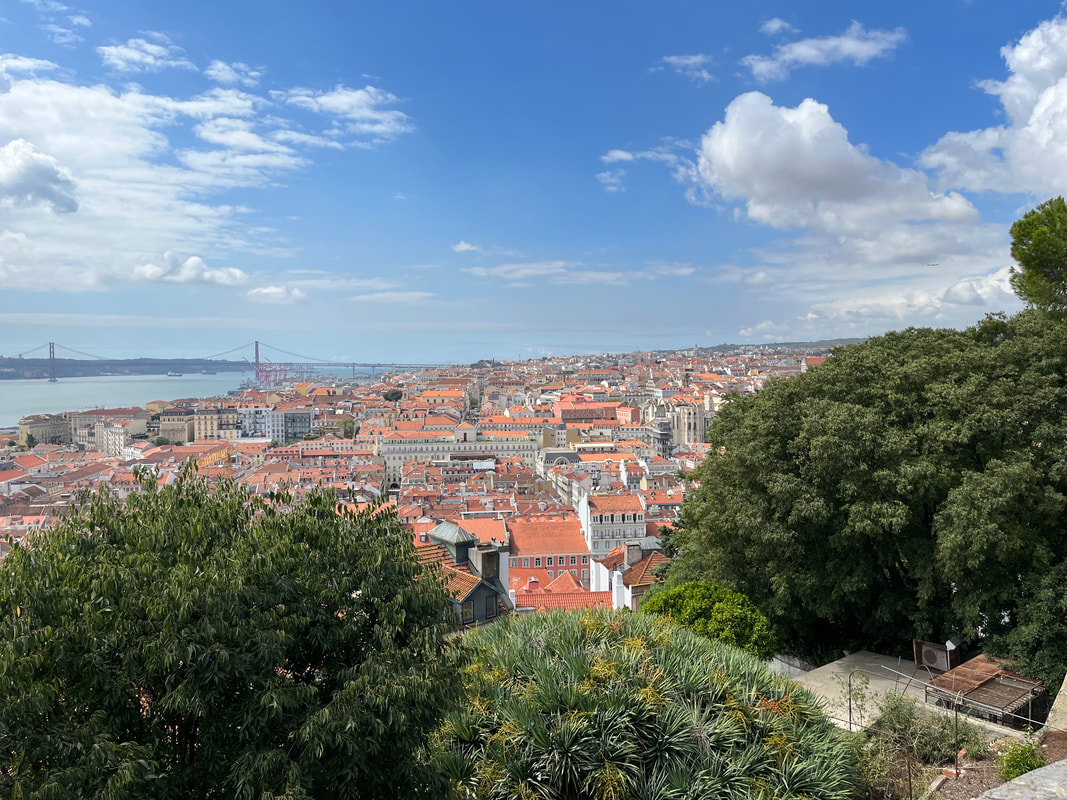
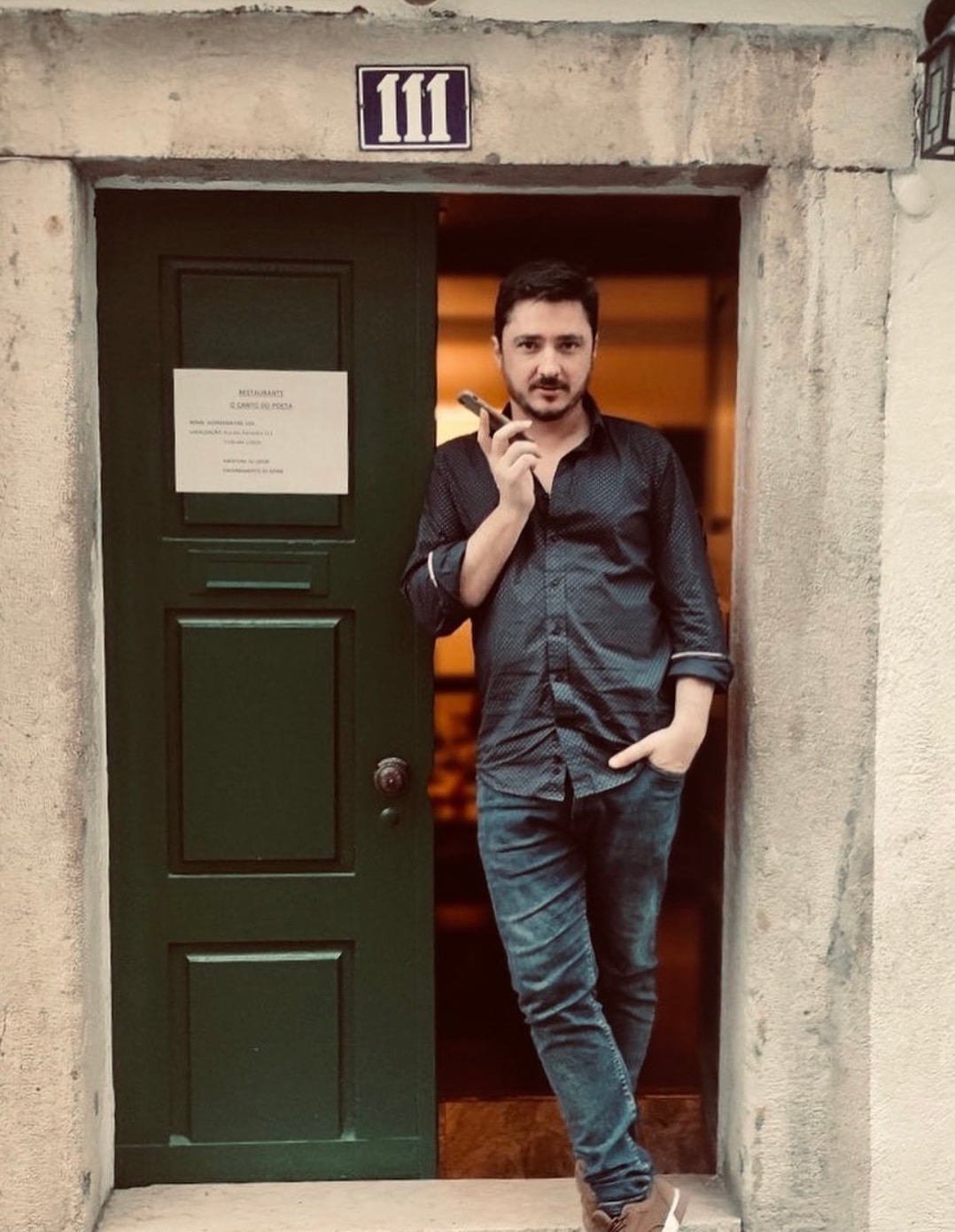

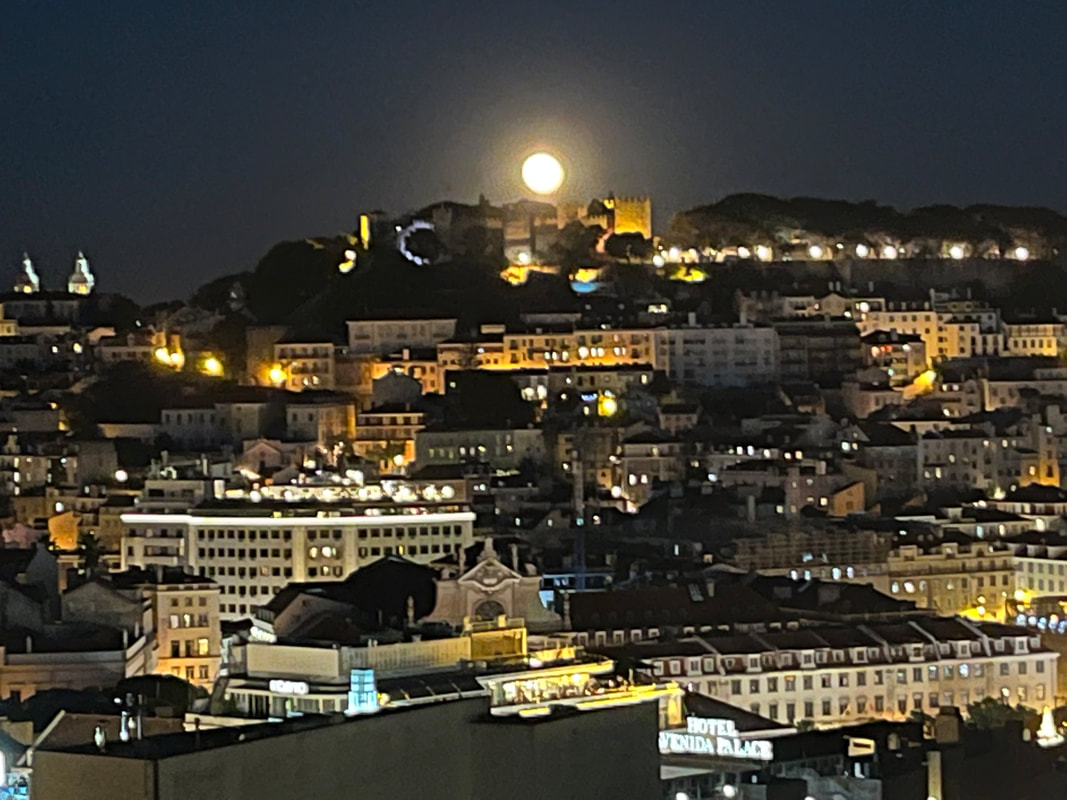



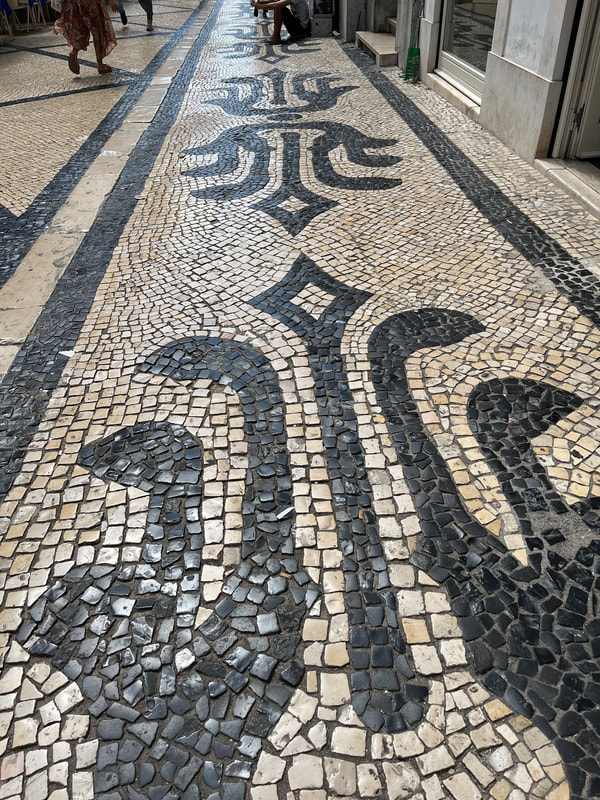

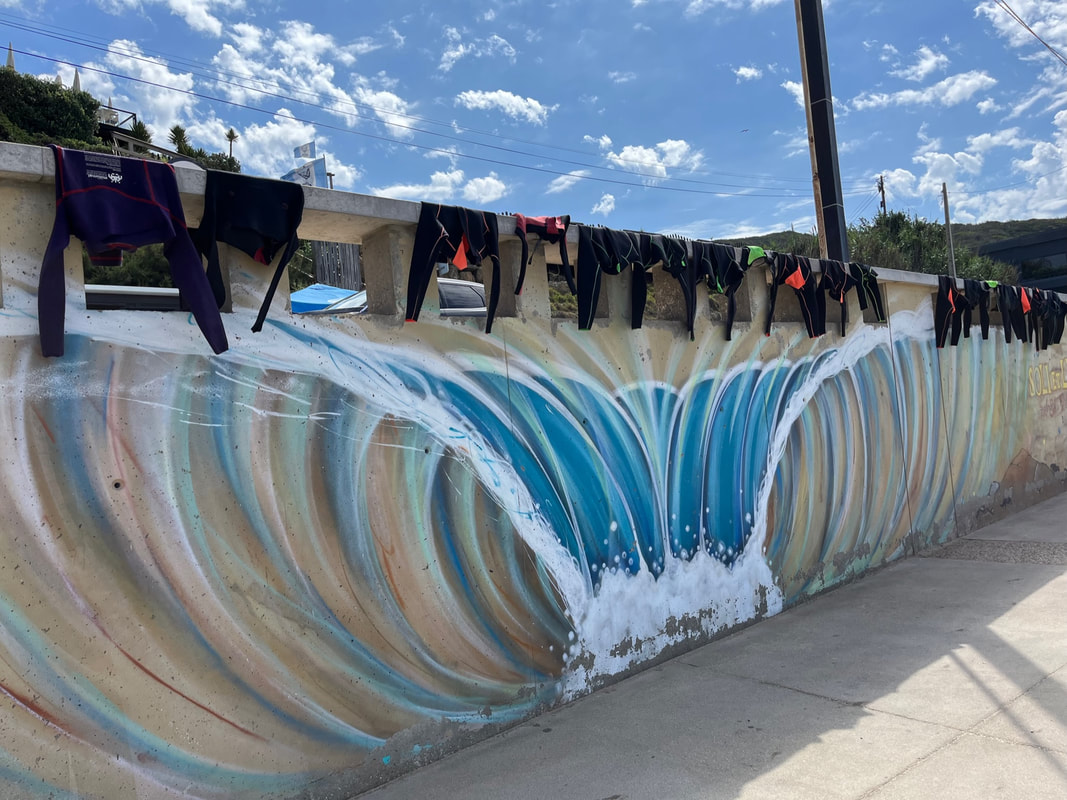
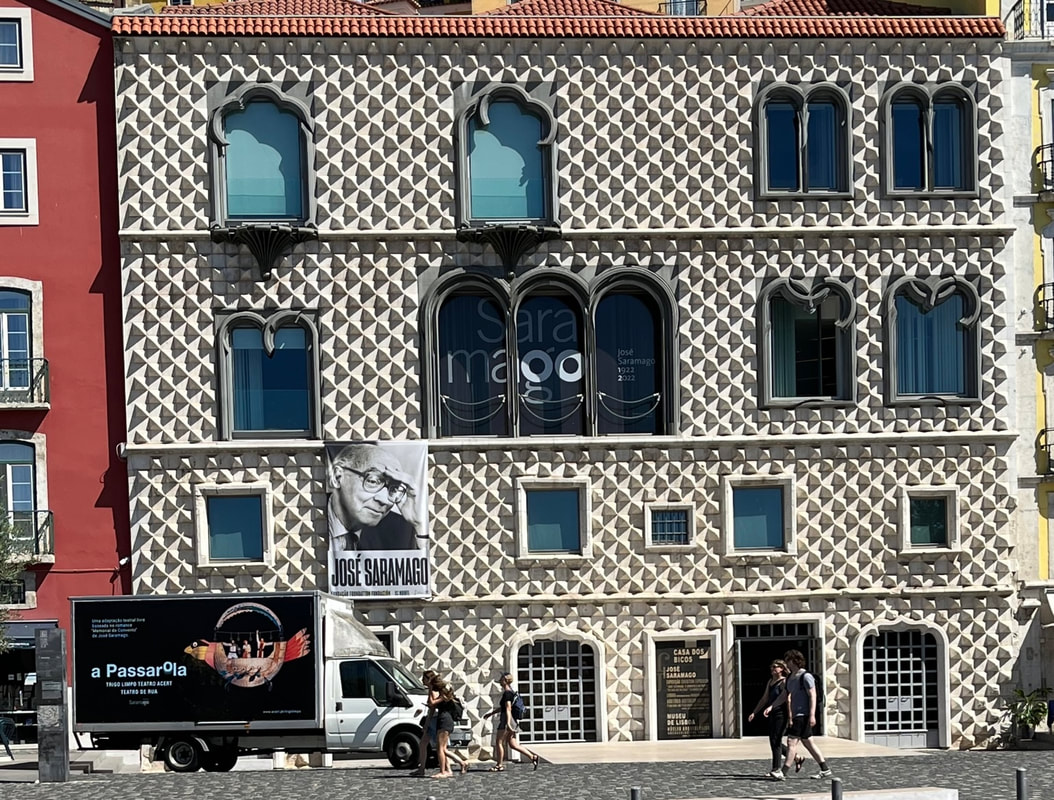
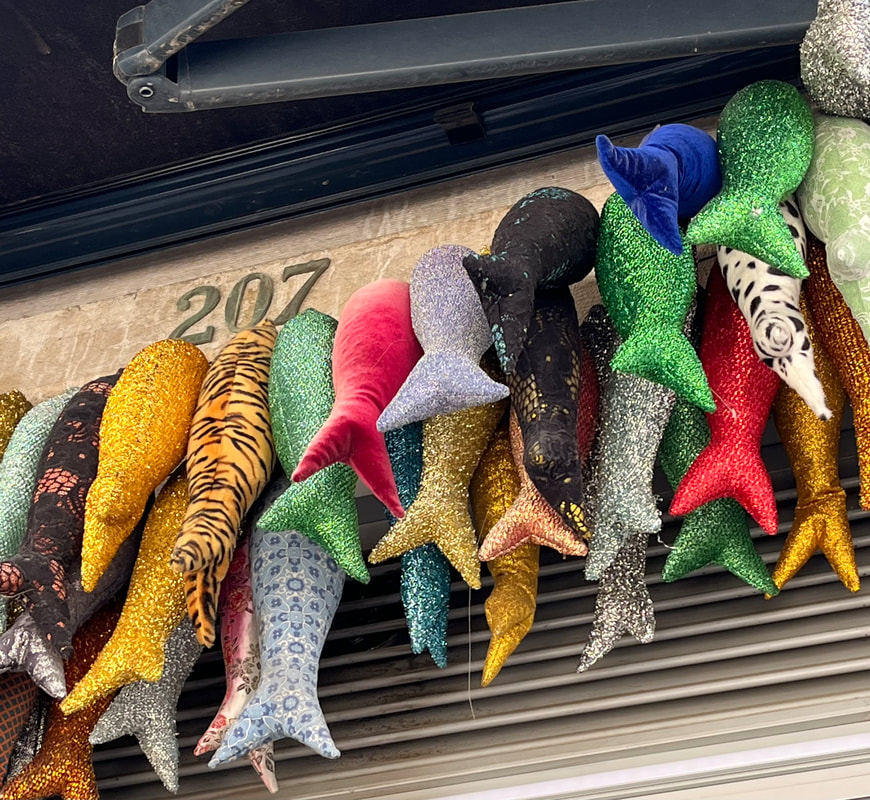
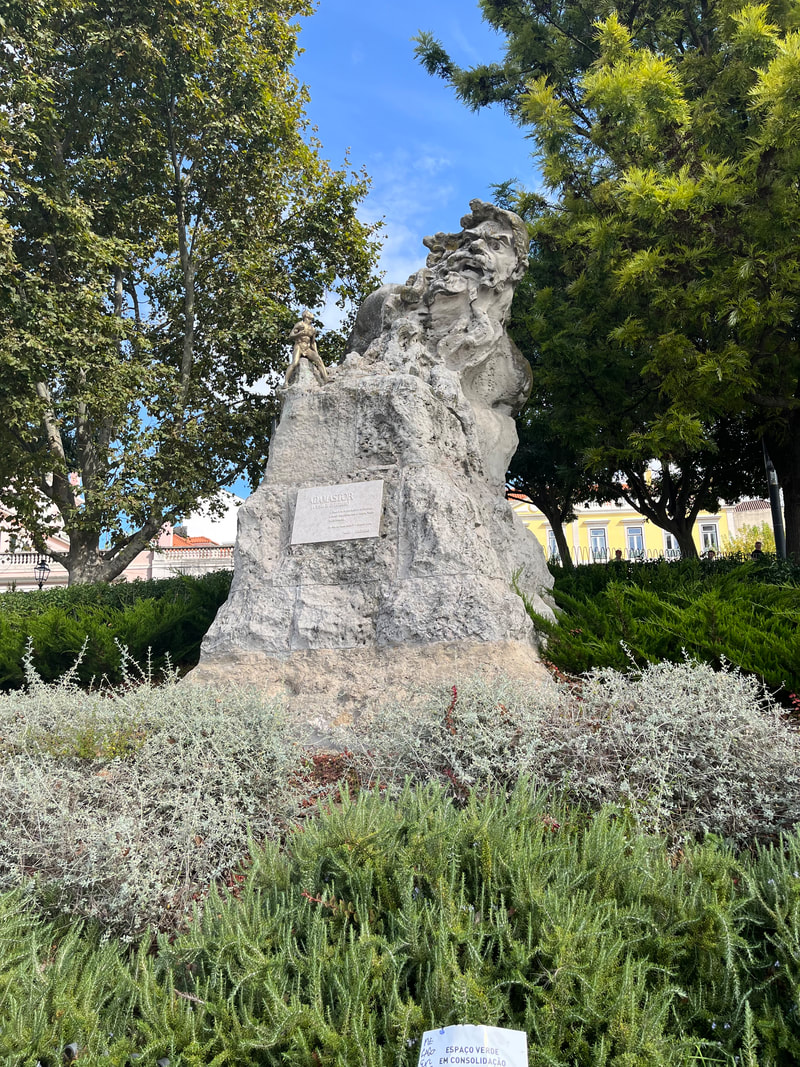

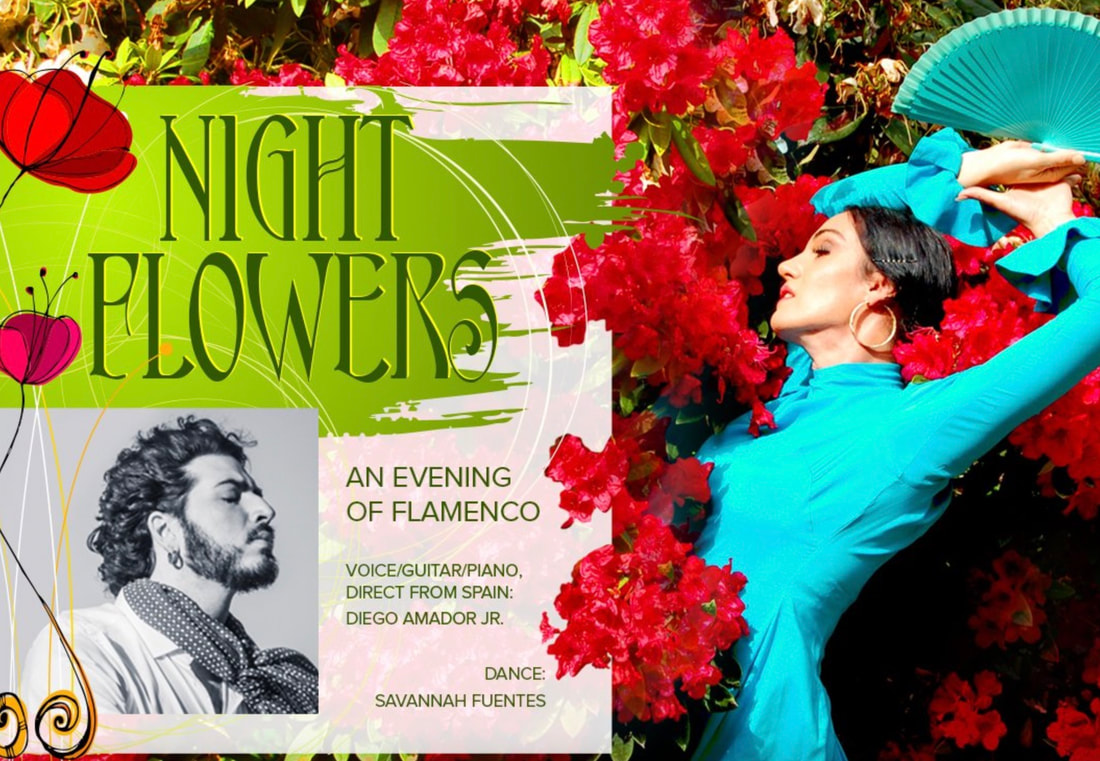


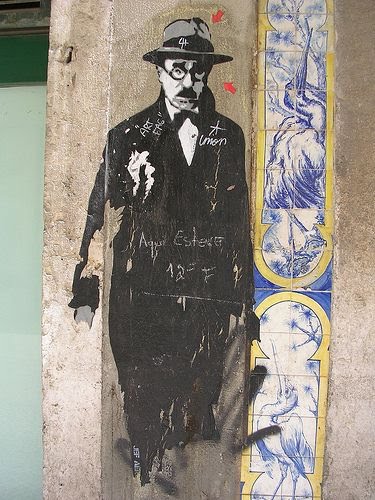
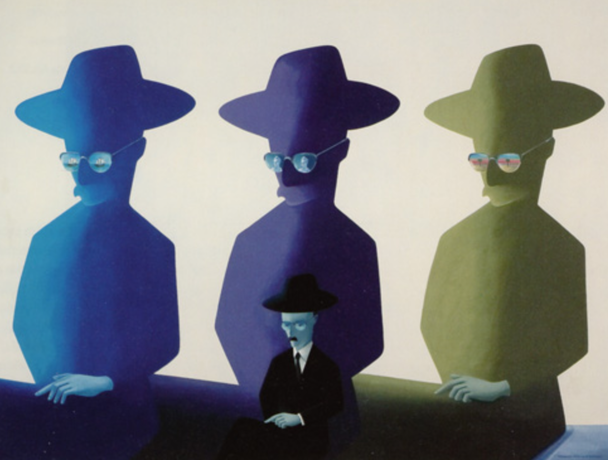

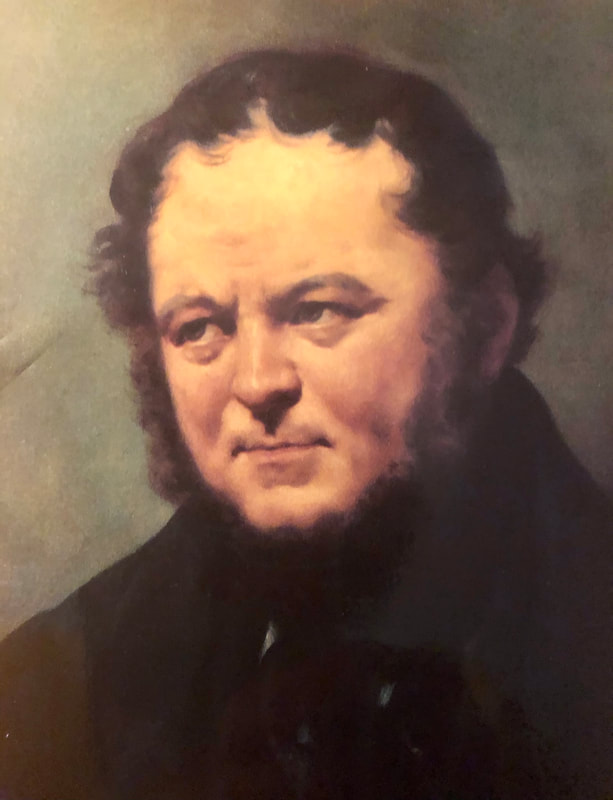
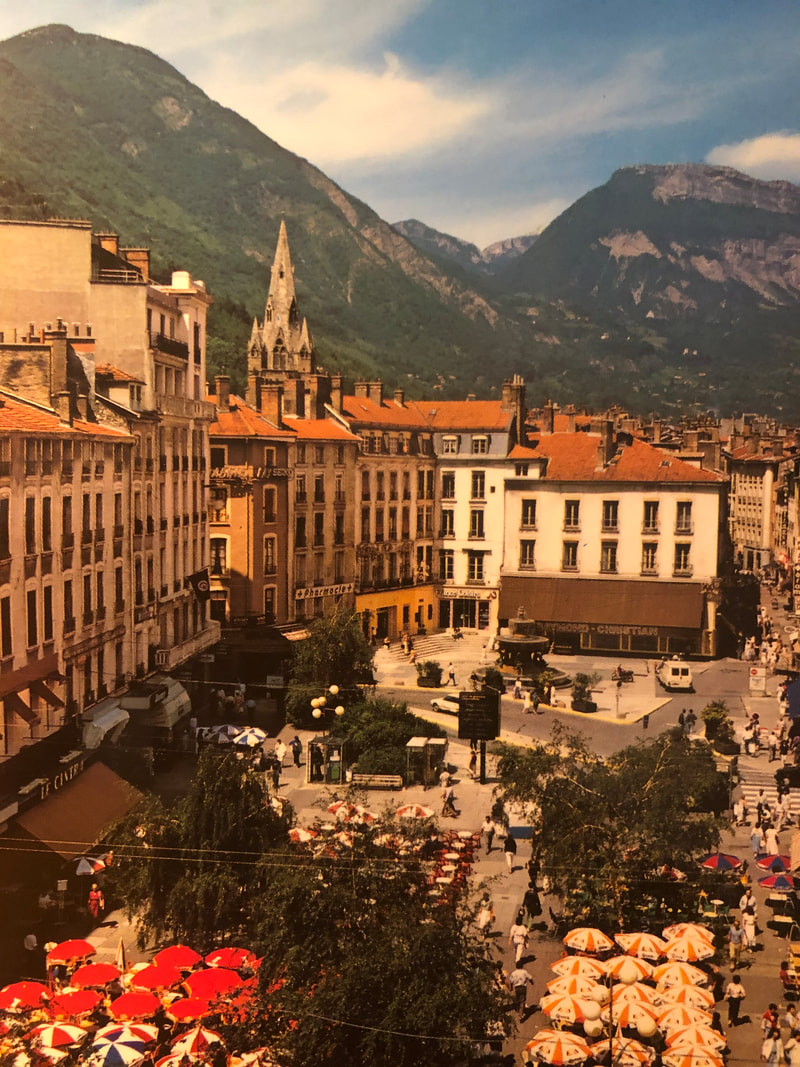
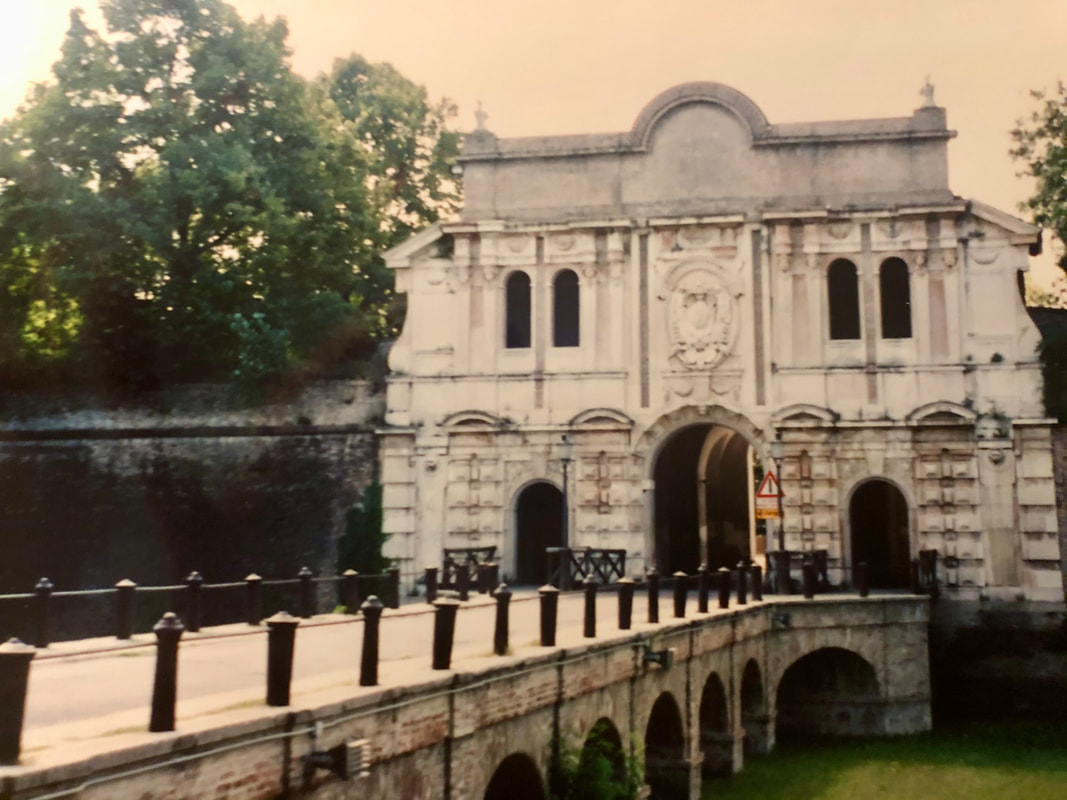
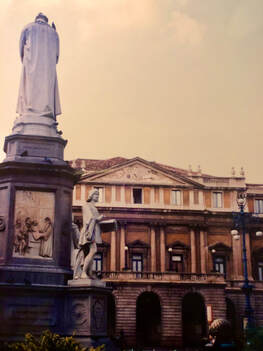


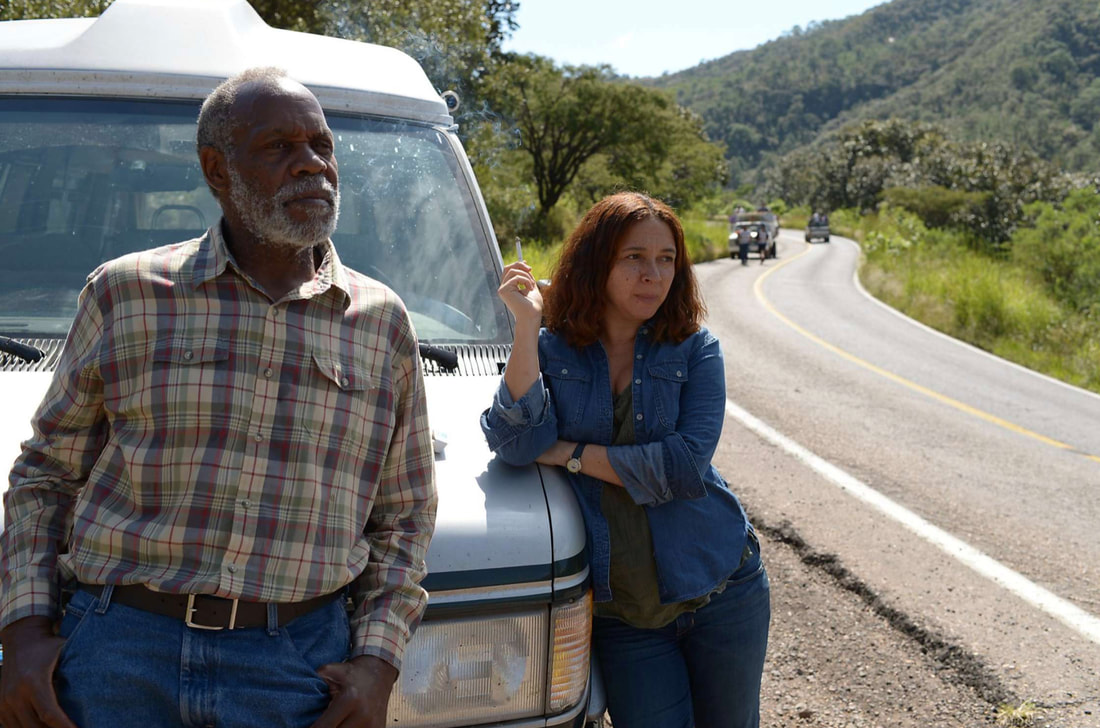
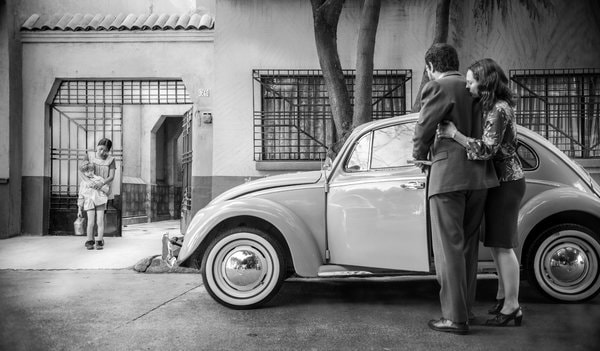
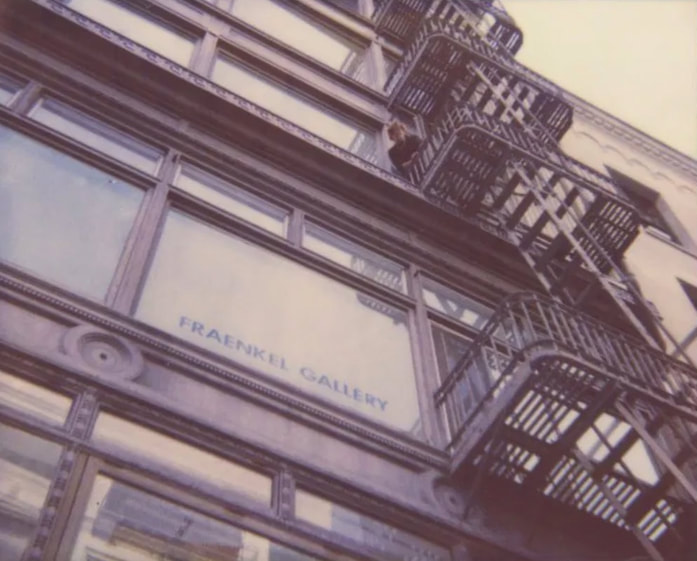
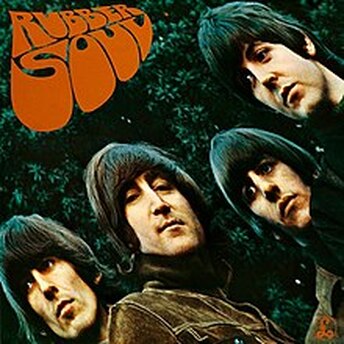
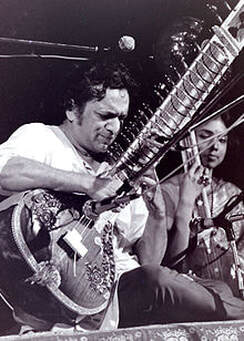
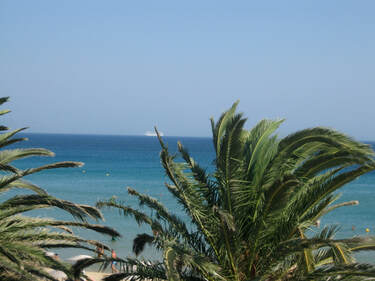






 RSS Feed
RSS Feed